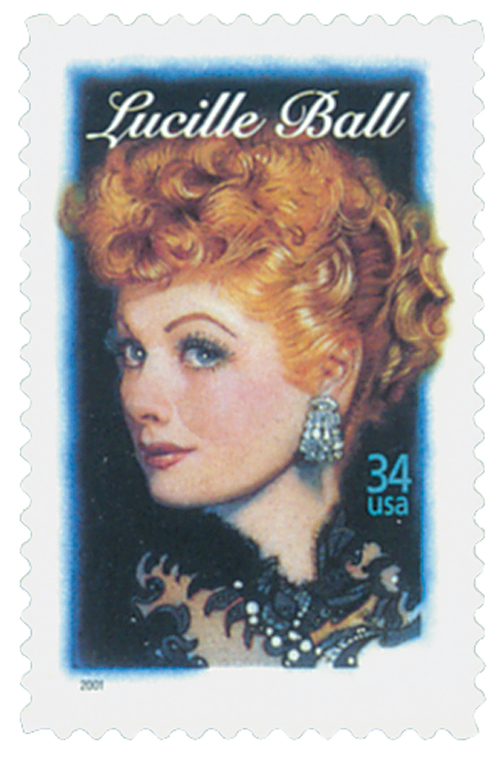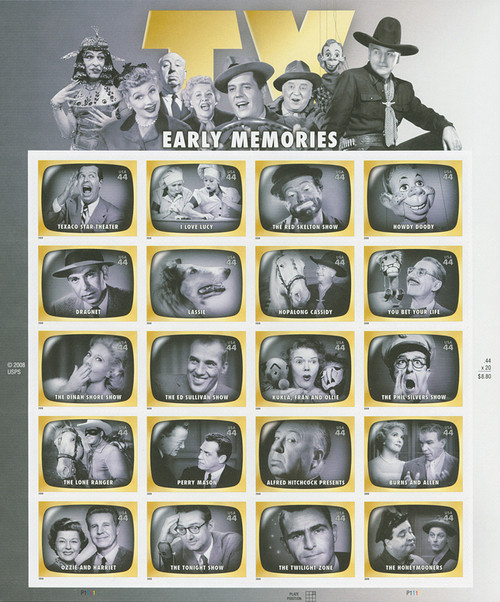
# 4414b - 2009 44c Early TV Memories: I Love Lucy
Early TV Memories –
I Love Lucy
Issued: August 11, 2009
North Hollywood, CA
Happy Birthday Lucille Ball
The daughter of a Bell Telephone Company lineman, Lucy and her family moved frequently when she was a child, spending time in Anaconda, Montana, and Trenton, New Jersey. When her father died in 1915, the family moved to Celoron, New York to live with her grandparents.
Lucy’s mother remarried in 1919. A few years later, her new stepfather, a Shriner, encouraged 12-year-old Lucy to audition for the chorus line of one of their shows. Lucy found the praise and attention she received on stage to be intoxicating and knew she found her calling.
When she was 14, Lucy began dating an older man. To discourage the relationship, her mother arranged for Lucy to attend the John Murray Anderson School for the Dramatic Arts in New York City. Lucy attended the school at the same time as future star Bette Davis. However, Lucy’s instructors advised her to try a different career, and she later recalled that all she learned there “was how to be frightened.”

After leaving the school, Lucy was even more determined and took a number of jobs, including modeling, most notably for fashion designer Hattie Carnegie. She went on to become the Chesterfield cigarette girl before finding chorus work on Broadway.
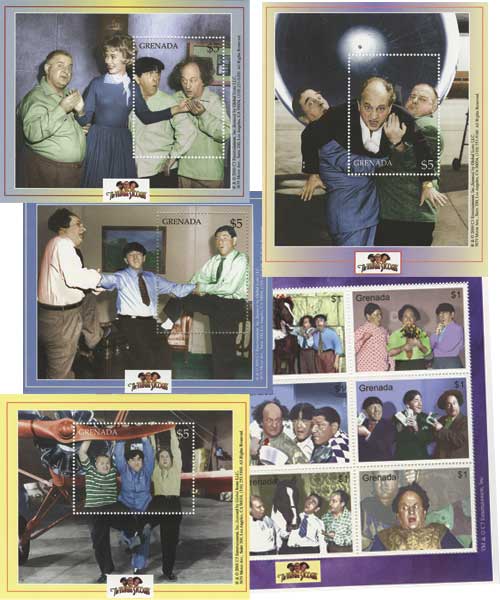
In 1933, Lucy had an uncredited role in Roman Scandals, prompting her to move to Hollywood. She then became a contract player for RKO Radio Pictures appearing in a Three Stooges short (Three Little Pigskins) and a Marx Brothers movie (Room Service). Lucy also appeared in a couple Fred Astaire and Ginger Rogers films (Lucy and Ginger were distant maternal cousins) as well as Stage Door with Katharine Hepburn.
In 1940, Lucy met Cuban-born bandleader Desi Arnaz on the set of Too Many Girls. The two hit it off immediately and were married later that year. Lucy continued to star in films as well as a popular radio show, My Favorite Husband. When approached to move the show to television, Lucy insisted that Desi play her on-camera husband. The result was the enormously successful I Love Lucy TV series.
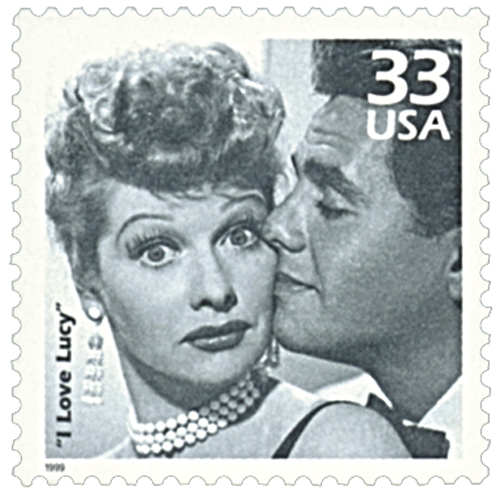
In the I Love Lucy pilot, shot on March 2, 1951, the characters’ names were Lucy and Larry López. Once the series began, the names had been changed to Lucy and Ricky Ricardo. Desi’s character was a Cuban bandleader who worked in New York City, and Lucille played a madcap housewife who longed to be on stage. On April 23, Philip Morris agreed to sponsor the show.
The cast members rehearsed many hours a day to achieve the perfection they all desired. I Love Lucy first aired on October 15, 1951, and was among TV’s top ten. It became number one during its first season, and held that position for most of its original run.
Lucy and Desi learned they were expecting a second child in 1952. At that time, an actress had never appeared on stage obviously pregnant. But rather than cancel the successful series, Lucy’s pregnancy was written into the show. Seven ‘pregnancy’ episodes were filmed. A rabbi, priest, and minister, who also visited the set for dress rehearsals, screened scripts. Little Ricky’s arrival in 1953 was one of TV’s most memorable events.
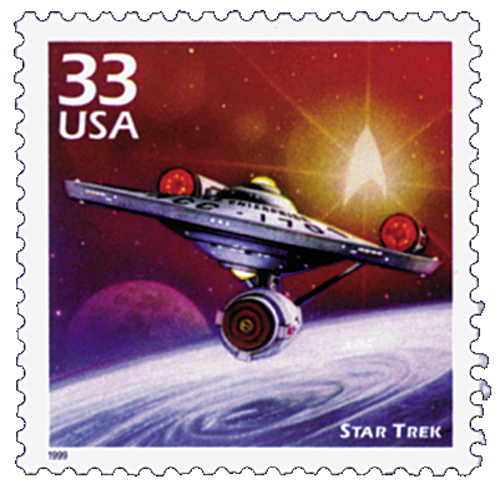
When they began working on the show, Lucy and Desi formed Desilu Productions, which owned I Love Lucy and produced many top-rated television series including Star Trek, Mission Impossible, and The Untouchables. Ball helped choose shows to be produced, judging what audiences would like and whether they would continue to play as reruns. When Desi retired from the company in 1962 (two years after their divorce) Lucy became the first female president of a major Hollywood film company. She created a new program, The Lucy Show, which ran for six years. In the meantime, she continued to lead Desilu until 1967, when she sold it and it became Paramount Television. She then established Lucille Ball Productions and continued to act and star in her own show – The Lucy Show and Here’s Lucy.
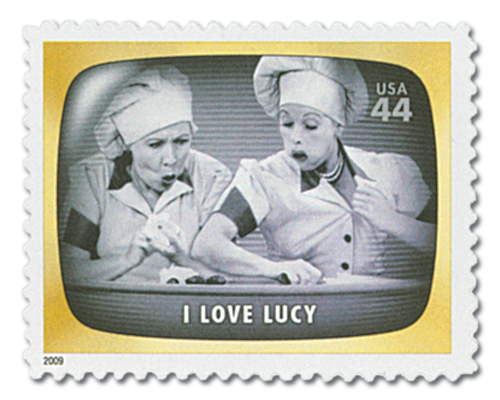
Following her short-lived series, Life with Lucy, she began suffering health problems before passing away on April 26, 1989.
Lucy received a number of honors, including two stars on the Hollywood Walk of Fame, a posthumous Presidential Medal of Freedom, and was named the Greatest TV Star of All Time by TV Guide.
“Every week you had to stop and watch ‘I Love Lucy.’ She and Ricky and the Mertzes – Fred and Ethel – were just so funny! Ricky was always hollering at her, “Lucy, you got some ‘splainin’ to do!” Like when she and Ethel got that job making chocolates. It didn’t last long…they’d pop some in their mouths to keep up, but of course they got fired.” – Susie K.
In the 1950s, a red-headed fashion model found fame as a frazzled housewife, and the whole world fell in love with Lucy. She played a housewife frustrated with her limited lifestyle, compared to her show-biz husband. Their misadventures were a smash hit – it was the top-rated show in the early 1950s, with the highest-rated episode being her trip to the hospital to give birth. The couple’s zany television personalities were the opposite of their savvy, real-life business instincts. As a result, this beloved classic still prospers in syndication more than a half century later.
Early TV Memories –
I Love Lucy
Issued: August 11, 2009
North Hollywood, CA
Happy Birthday Lucille Ball
The daughter of a Bell Telephone Company lineman, Lucy and her family moved frequently when she was a child, spending time in Anaconda, Montana, and Trenton, New Jersey. When her father died in 1915, the family moved to Celoron, New York to live with her grandparents.
Lucy’s mother remarried in 1919. A few years later, her new stepfather, a Shriner, encouraged 12-year-old Lucy to audition for the chorus line of one of their shows. Lucy found the praise and attention she received on stage to be intoxicating and knew she found her calling.
When she was 14, Lucy began dating an older man. To discourage the relationship, her mother arranged for Lucy to attend the John Murray Anderson School for the Dramatic Arts in New York City. Lucy attended the school at the same time as future star Bette Davis. However, Lucy’s instructors advised her to try a different career, and she later recalled that all she learned there “was how to be frightened.”

After leaving the school, Lucy was even more determined and took a number of jobs, including modeling, most notably for fashion designer Hattie Carnegie. She went on to become the Chesterfield cigarette girl before finding chorus work on Broadway.

In 1933, Lucy had an uncredited role in Roman Scandals, prompting her to move to Hollywood. She then became a contract player for RKO Radio Pictures appearing in a Three Stooges short (Three Little Pigskins) and a Marx Brothers movie (Room Service). Lucy also appeared in a couple Fred Astaire and Ginger Rogers films (Lucy and Ginger were distant maternal cousins) as well as Stage Door with Katharine Hepburn.
In 1940, Lucy met Cuban-born bandleader Desi Arnaz on the set of Too Many Girls. The two hit it off immediately and were married later that year. Lucy continued to star in films as well as a popular radio show, My Favorite Husband. When approached to move the show to television, Lucy insisted that Desi play her on-camera husband. The result was the enormously successful I Love Lucy TV series.

In the I Love Lucy pilot, shot on March 2, 1951, the characters’ names were Lucy and Larry López. Once the series began, the names had been changed to Lucy and Ricky Ricardo. Desi’s character was a Cuban bandleader who worked in New York City, and Lucille played a madcap housewife who longed to be on stage. On April 23, Philip Morris agreed to sponsor the show.
The cast members rehearsed many hours a day to achieve the perfection they all desired. I Love Lucy first aired on October 15, 1951, and was among TV’s top ten. It became number one during its first season, and held that position for most of its original run.
Lucy and Desi learned they were expecting a second child in 1952. At that time, an actress had never appeared on stage obviously pregnant. But rather than cancel the successful series, Lucy’s pregnancy was written into the show. Seven ‘pregnancy’ episodes were filmed. A rabbi, priest, and minister, who also visited the set for dress rehearsals, screened scripts. Little Ricky’s arrival in 1953 was one of TV’s most memorable events.

When they began working on the show, Lucy and Desi formed Desilu Productions, which owned I Love Lucy and produced many top-rated television series including Star Trek, Mission Impossible, and The Untouchables. Ball helped choose shows to be produced, judging what audiences would like and whether they would continue to play as reruns. When Desi retired from the company in 1962 (two years after their divorce) Lucy became the first female president of a major Hollywood film company. She created a new program, The Lucy Show, which ran for six years. In the meantime, she continued to lead Desilu until 1967, when she sold it and it became Paramount Television. She then established Lucille Ball Productions and continued to act and star in her own show – The Lucy Show and Here’s Lucy.

Following her short-lived series, Life with Lucy, she began suffering health problems before passing away on April 26, 1989.
Lucy received a number of honors, including two stars on the Hollywood Walk of Fame, a posthumous Presidential Medal of Freedom, and was named the Greatest TV Star of All Time by TV Guide.
“Every week you had to stop and watch ‘I Love Lucy.’ She and Ricky and the Mertzes – Fred and Ethel – were just so funny! Ricky was always hollering at her, “Lucy, you got some ‘splainin’ to do!” Like when she and Ethel got that job making chocolates. It didn’t last long…they’d pop some in their mouths to keep up, but of course they got fired.” – Susie K.
In the 1950s, a red-headed fashion model found fame as a frazzled housewife, and the whole world fell in love with Lucy. She played a housewife frustrated with her limited lifestyle, compared to her show-biz husband. Their misadventures were a smash hit – it was the top-rated show in the early 1950s, with the highest-rated episode being her trip to the hospital to give birth. The couple’s zany television personalities were the opposite of their savvy, real-life business instincts. As a result, this beloved classic still prospers in syndication more than a half century later.






